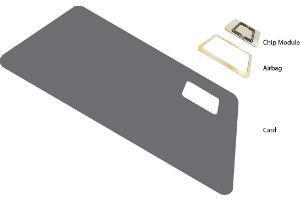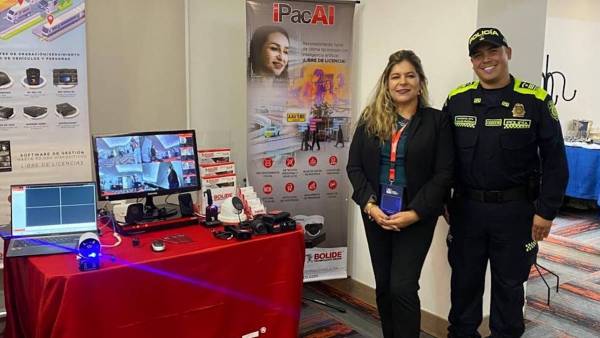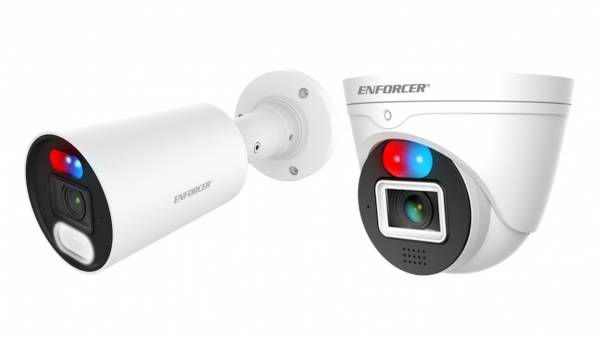 Over the past fifteen years, there has been rapid adoption of contact-based, contactless, dual-interface smart card technology in advanced national identity card and e-passport programs.
Over the past fifteen years, there has been rapid adoption of contact-based, contactless, dual-interface smart card technology in advanced national identity card and e-passport programs.
by Stéphane Ayala and Hermann Hecker*
High security issues, high traffic at border crossings, and the growing need for simplified government services are just some of the factors influencing this change. Currently, governments and national organizations are more likely to take advantage of identification programmes as an opportunity to increase effectiveness and to protect and secure the identity of the holder.
This has resulted in projects demanding powerful multipurpose identification credentials that work at numerous levels, maintaining the highest levels of security and addressing, in turn, additional objectives such as entry to secure facilities, faster border crossing or access to health and social services.
As a result, government agencies around the world are recommending smart card and document-enabled applications based on an integrated circuit (IC) chip more frequently to achieve these goals.
The demand for chip-based smart card technology and advances in materials science have driven substantial progress in card construction, resulting in more sophisticated solutions that better meet the complex requirements in security, reliability and efficiency of the program, and the growing multiple functionality offered in a single credential.
While the concept of a multifunctional card is simple, the reality is difficult to achieve. Considerable design, technical and manufacturing expertise must be employed to ensure that the end result conforms to international standards for size, safety, functionality and durability.
However, such cards are ultimately a more cost-effective and efficient option than multiple single-purpose credentials, and allow program specifiers to uniformly ensure a high standard of security in designated functions.
A key factor in meeting these goals is the durability of the identification (ID). Modern identification documents must withstand many types of stress, ranging from attempts at physical alteration to years of inconsiderate manipulation in various environments and weather conditions.
Polycarbonate, due to its unique properties, has gained the trust of governments as the material of choice for its durability and tampering resistance. Cards built with polycarbonate are also more solid than polyvinyl chloride (PVC) cards. Key features include the extreme robustness, flexibility and robustness of polycarbonate, as well as its capabilities as a platform to operate the high-quality optical functions of high-security printing.
The use of this material, along with the incorporation of multiple on-board technologies and safety functions into a single multi-layer identification platform, requires considerable expertise in the lamination of complex structures and the appropriate application of various materials. The industry has now found that incorporating onboard technologies, such as RFID or contactless or non-contact chips, could create unexpected stress on polycarbonate structures. Therefore, new innovative technologies, such as crack prevention, are needed to protect the structural integrity of the credential, while complying with international standards.
This paper will examine HID Global's unique crack prevention feature, which protects both polycarbonate and the IC module. This solution optimizes the reliability of smart cards by allowing manufacturers to maintain the original advantages of polycarbonate, which is now threatened by the introduction of an IC chip, and prolong the life of the credential. HID Global's innovation is currently used in more than 10 million cards for a European national electronic identification program, the most implemented in any advanced ID card program in the world.
Polycarbonate: behind its success
It is no accident that polycarbonate has become the most appropriate material for secure identification documents today. When used in its pure form and not mixed with other plastics, the different layers of polycarbonate that make up an identity document merge to form a single solid and monoblock card body. These features preserve the integrity of the document, preventing it from being disarmed and giving it high resistance to fraud.
Polycarbonate also complies with most of the safety features available on the market, such as security offset printing, optically variable or fluorescent inks and holograms. This makes it the perfect business match for the requirements of today's most popular security technologies.
The main advantages of polycarbonate include:
*Temperature resistance: It can withstand high temperatures (more than 180°), which allows it to be used in extreme weather times and conditions.
*Tamper-proof structure: When a card is made of 100% polycarbonate, its monoblock feature makes it impossible to separate the different layers without destroying the card itself.
*Irreversible customization: Laser engraving is one of the most popular methods of personalization of identification documents; polycarbonate is a highly appropriate material for this irreversible process.
*Optimal platform for safety features: Due to the optical quality of polycarbonate, it is compatible with the main safety features available on the market.
*Durable: Polycarbonate is highly durable and flexible.
*Neutral impact on the environment: The impact on the environment is less dramatic than that of PVC. The combustion of polycarbonate produces carbon dioxide and water, and no toxic gases are generated.
The combination of these unique properties has transformed polycarbonate into the material of choice for large-scale identification programmes in the government id sector, including national ID programmes, e-passports and driver's licences.
Optimization of service life
A central assumption about polycarbonate is that after the card is laminated, it becomes a monolithic piece of polycarbonate. However, in contactless RFID documents, this assumption does not occur. The card contains electronic systems that are surrounded by and melted into plastic. Inclusions – for example, foreign materials such as IC chips – in plastics are known to cause stress, as they create areas of material weakness that are usually starting points for material decomposition.
In other areas of the plastics industry, such inclusions are avoided as far as possible. Any cavity or inclusion that is indispensable is rounded in the corners or moved to an area of the plastic where it can be expected to cause the least stress, or other measures are taken. Such practices are not used in the production of standard polycarbonate cards.
As a consequence, polycarbonate begins to crack around the IC module, as it ages over time and also as a result of a significant difference in thermomechanical coefficients between the IC module and the polycarbonate.
In fact, polycarbonate cards are under high stress from the start. After lamination, the polycarbonate is under extreme stress around the IC module, and any thermal or mechanical stress can exert a destructive impact on the cards.
Therefore, when the cards are subject to mechanical stress such as everyday wear, tension is released in the form of small micro cracks in the polycarbonate surrounding the IC module (which consists mainly of a metal frame and a resin cap or cover that protect the chip).
Micro cracks are usually invisible to optical inspection, and will continue to progress undetected within the cards, migrating from the module area to the card surface. This process destabilizes the card over time and contributes to its premature aging. Cracks can also be accelerated due to mechanical stress such as bends and sprains that occur naturally over the life of the card.
An "airbag" type solution
HID Global has reached an exceptional level of inclusive technology expertise in the arena of secure id credentials, based on years of innovation and development for agencies that depend on the highest levels of security, quality, durability and reliability. The company's expertise in laminating complex structures and applying various materials to protect the structural integrity of the credential, while meeting international standards, has produced numerous innovations in the industry.
HID Global has been working to address the cause and prevention of micro cracks in order to restore the full promise of polycarbonate cards, including their extraordinary reliability and desired service life of up to 10 years. Over the course of nearly three years, HID Global's R&D worked to develop and patent a new "Crack Prevention Function" (CPF) that prevents the development and emergence of micro cracks.
HID Global's materials and manufacturing experts initially focused on determining where the cracks originate (a challenging task, as the opaque material of the card and the layered construction around the RFID chips hide the existence of potential cracks) and also had to understand how and why they propagated.
HID gained the benefit of having a trained R&D team with a background in the field of microelectronic component packaging.
The proximity to testing laboratories, including those simulating aging, from a local semiconductor manufacturer for automotive applications also proved beneficial, as durability in a harsh environment is a key feature in any automotive application.
HID's solution, achieved after vast experimentation and testing, involves the creation of a mattress around the chip. While it addressed the problem of cracks, which required the addition of one more layer of material inside the card, the result presented new challenges. Further experimentation was required to produce a credential that could incorporate the CPF, while complying with strict international standards that limit the size and thickness of machine-readable electronic ID cards. In the development process, almost 100kg of ceFLEXmaterial was consumed. This is a significant amount, given that a card weighs only five grams.
The first credentials to contain the CPF function were initially implemented in 2008 in a major European electronic ID card programme. Originally developed for polycarbonate ID cards containing RFID chips, the crack prevention process has been adapted more recently to meet the special requirements of e-passports.
Following the successful implementation of polycarbonate ID cards around the world, polycarbonate is already increasingly being used for passport data pages, and HID Global has adapted crack prevention for this purpose as well.
How does CPF work?
The crack prevention feature is part of the RFID embedding of the card, which serves the entire industry as it brings the advantages of crack prevention to all polycarbonate card manufacturers.
Anti-crack technology protects the polycarbonate and IC module, as it is effectively implemented as an airbag. In a step near the end of the card manufacturing process, just before lamination, the CPF "airbag" is built inside the papers. The CPF performs its function only in connection with the appropriate lamination process. The necessary uniform temperature and vacuum profile are provided by HID's professional large-scale lamination systems.
In short, the patented CPF process separates the IC module from the polycarbonate using HID Global's ceFLEX material in order to prevent contact between the two areas during the lamination process. No stress or tension can be accumulated, since the tension is absorbed by the ceFLEX material, which ensures and protects both the module and the polycarbonate (see the image below).
Once the card and chip have gone through the lamination process without creating any stress, the ceFLEX transforms into a highly bonded but flexible bearing for the chip within the card. This offers a firm connection to the body of the card and a total lack of harmful tension inside the card during its lifespan.
The shape of the chip module is an important parameter in the CPF manufacturing process. HID analyzes each new module that enters the market and adapts the CPF to the module with its own solution.
A recent chemical study on the occurrence or prevention of cracks by Smithers PIRA of the United Kingdom demonstrated the premature ageing of polycarbonate cards (report published on 16 May 2012. Ref.: 12-115268).
PIRA tested two groups of polycarbonate cards, one with HID CPF and one without, and immersed the polycarbonate cards in a solution with 5% sodium hydroxide for an hour. The solution was used to accelerate the aging of the polycarbonate card and amplify the development of cracks if there were already mini cracks present. If there were no micro cracks, nothing changed.
In the image below we can see the impact on the cards of the sodium hydroxide test solution on a standard pure polycarbonate card after one hour:
PIRA reported that all standard polycarbonate cards showed cracks, from mild micro cracks to some very serious ones. In contrast, the population of HID's Crack Prevention Function (CPF) cards did not show any evidence of cracks that would normally be evident after years of aging.
The process does not use release agents. Such solutions can be found on the market and can cause serious problems when wax or oil migrates inland in an uncontrolled manner. HID Global never uses these substances and has banned them in its scale factories. This ensures the stability and high quality of the product delivered to card manufacturers. (IMAGE 5)
Conclusion
Governments around the world are creating increasingly layered, secure, and effective e-IDENTIFICATION programs to improve proof of identity, access to e-government services, and to improve critical activities such as safe and effective border crossing. To achieve these goals, organizations are choosing to implement a new generation of secure credentials containing IC chips, often in combination with other technologies.
As a result, the durability of idling credentials at the center of these ecosystems has become a major industry focus. A highly durable and reliable credential with a long service life improves a government's return on investment, as very few cards need to be replaced or reissued.
Durable credentials best serve cardholders, government agencies, and tax payers alike. For suppliers, the availability of consistently functioning card technologies – regardless of weather conditions – improves the overall cost structure and efficiencies of the industry.
Polycarbonate has proven to be a viable material for the production of many of the most important identification cards issued today. As more governments opt for smart cards containing IC chips for multiple applications, HID Global's CPF solution is already helping to prolong the life and durability of many types of polycarbonate-based cards, as proven by its use on more than 10 million cards in a european national e-ID program.
*Stéphane Ayala, belongs to the electronic documents area for product marketing of HID Global and Hermann Hecker is Manager of Engineering in electronic documents of the same company.

























Leave your comment